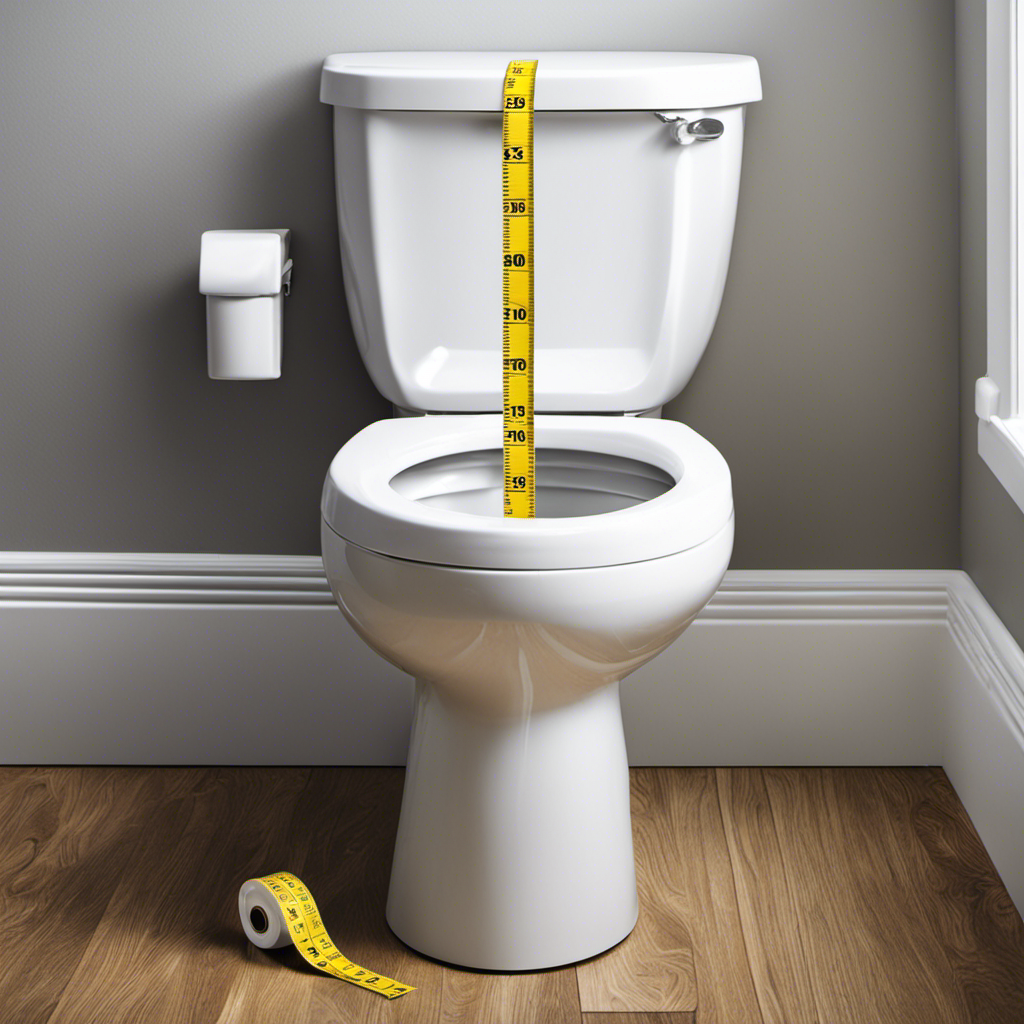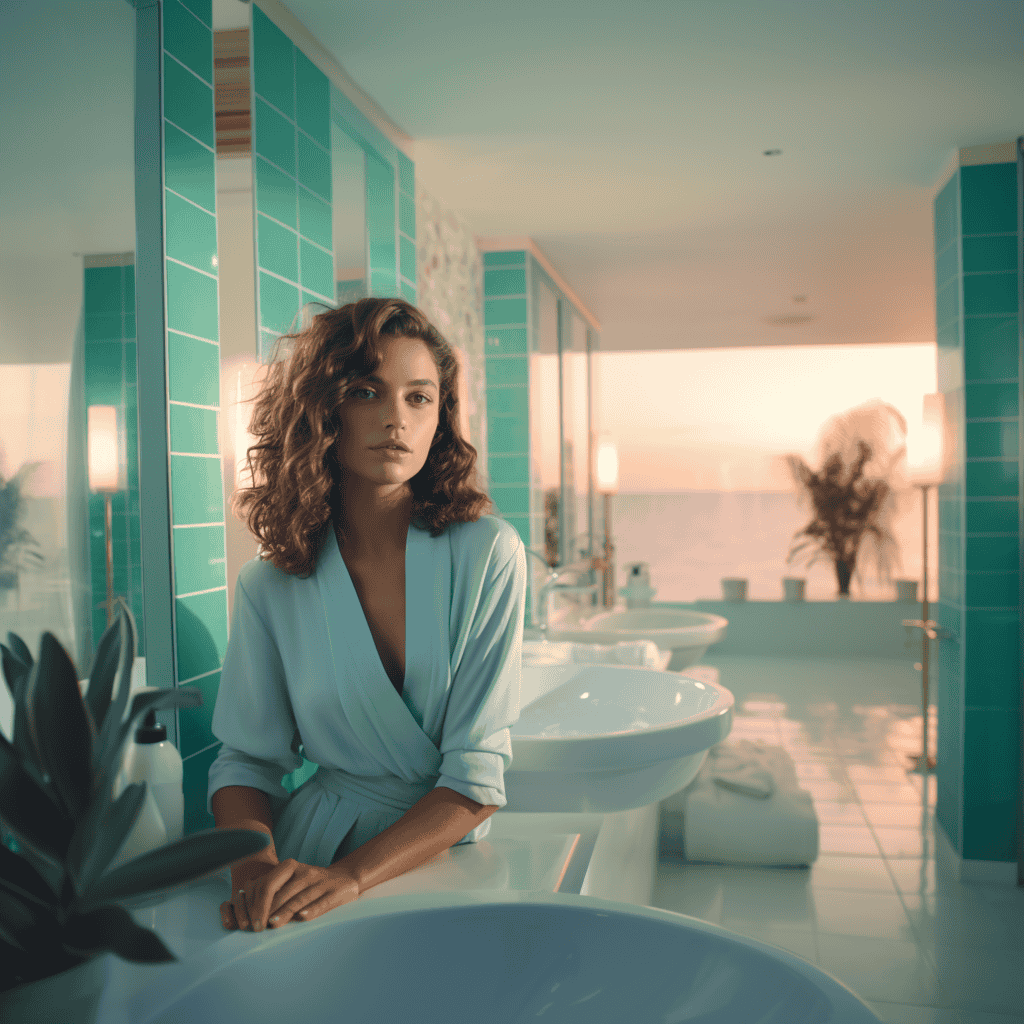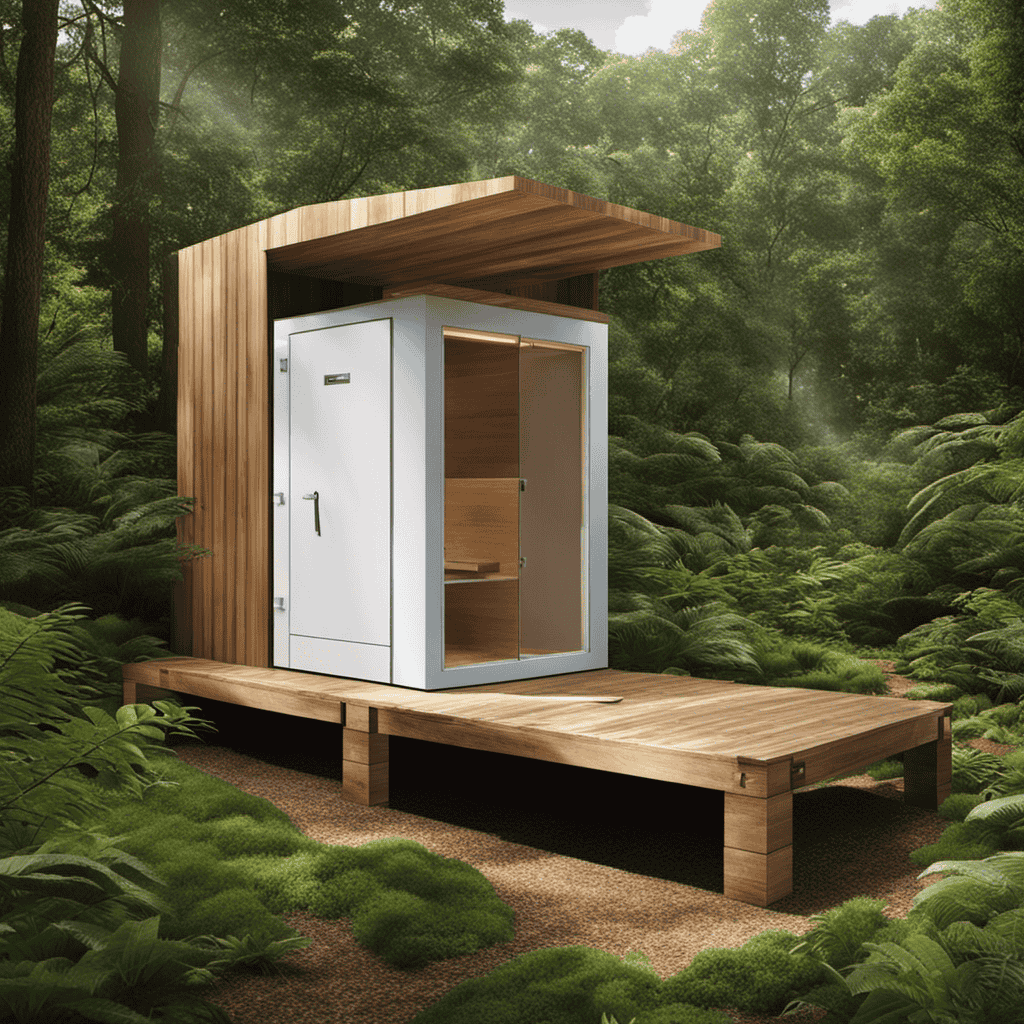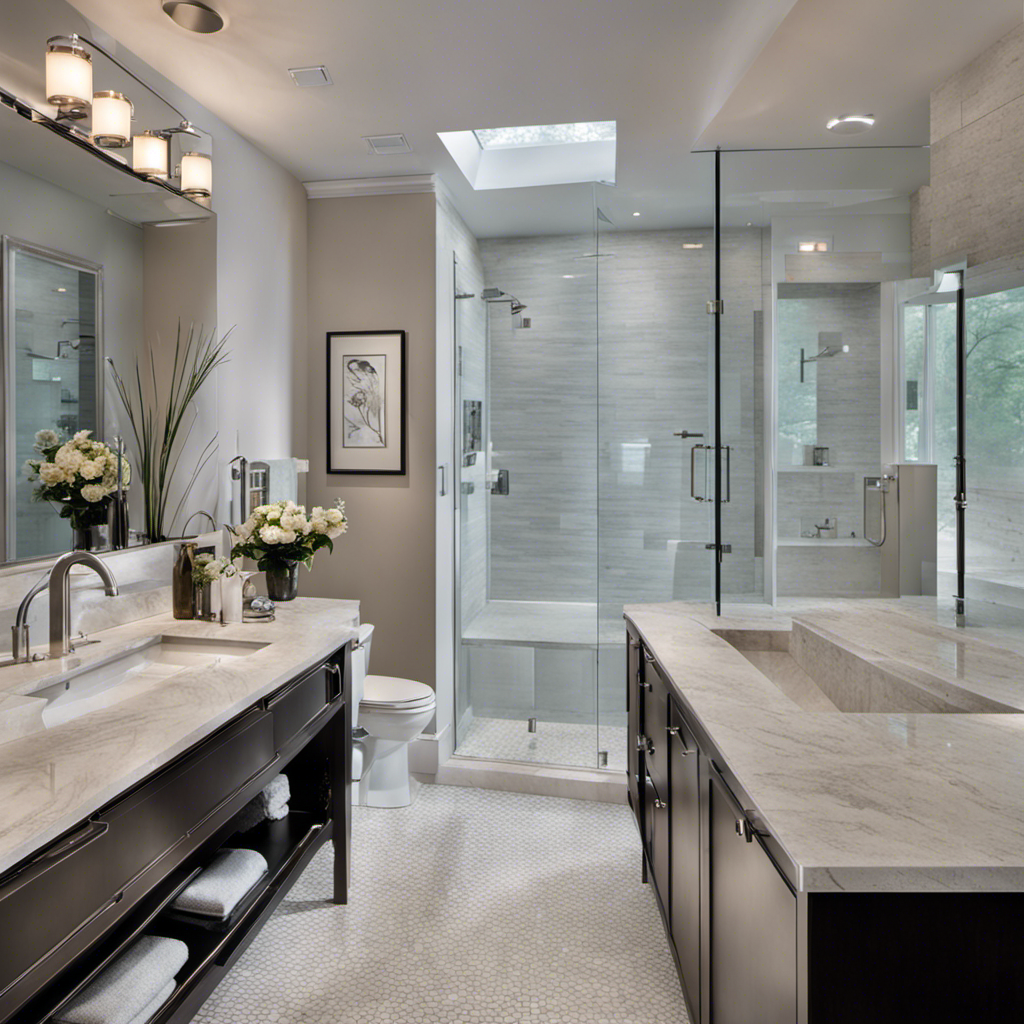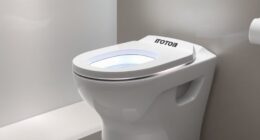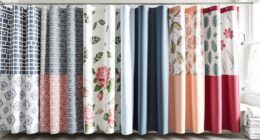Did you know that the average person spends about three years of their life on the toilet? That’s a significant amount of time, which is why it’s essential to have a toilet that fits your needs perfectly.
In this article, I will guide you through the process of measuring toilet size, so you can ensure a comfortable and functional bathroom experience. From understanding dimensions to assessing additional features, we’ll leave no detail unnoticed.
Let’s dive into the world of toilet measurement and find the perfect fit for your space.
Key Takeaways
- The length, width, and height are important dimensions to consider when choosing a toilet.
- Round toilet bowls typically measure around 16-17 inches in length, while elongated bowls can measure around 18-19 inches.
- Standard toilet seats usually measure around 14-15 inches in width.
- The height of the toilet seat is typically around 15-17 inches.
Understanding Toilet Dimensions
To understand toilet dimensions, you’ll need to take into account the length, width, and height of the fixture. When it comes to toilet installation, knowing the dimensions is crucial to ensure a proper fit in your bathroom.
The length refers to the distance from the back of the tank to the front of the bowl. The width is the measurement across the widest part of the bowl, usually at the seat level. Lastly, the height includes both the bowl height and the tank height.
These dimensions are important to consider when choosing a toilet seat as well. There are various toilet seat options available, including standard, elongated, and compact seats.
Understanding the dimensions will help you make the right choice for your bathroom and ensure a comfortable and functional toilet installation.
Measuring the Length of the Toilet
When it comes to replacing a toilet, it’s crucial to understand the standard dimensions and how to measure for a replacement.
The standard dimensions of a toilet include the length, width, and height.
To measure the length of the toilet, start from the wall behind the toilet to the front edge of the toilet bowl.
Standard Toilet Dimensions
You can easily determine the standard dimensions of a toilet by measuring the length, width, and height. The toilet bowl shape is an important consideration when determining the dimensions.
Most toilets have a round or elongated bowl shape. A round bowl typically measures around 16-17 inches in length, while an elongated bowl can measure around 18-19 inches.
Another important dimension to consider is the toilet seat size. Standard toilet seats typically measure around 14-15 inches in width. However, there are also larger seats available, measuring around 16-18 inches in width, for added comfort.
When measuring the height of the toilet, it is important to consider the distance from the floor to the top of the toilet seat, which is typically around 15-17 inches.
Measuring for Replacement Toilet
One important factor to consider when replacing a toilet is the overall dimensions of the existing fixture. To measure for a replacement toilet, start by measuring the rough-in, which is the distance from the wall to the center of the toilet flange. This is usually 12 inches, but it can also be 10 or 14 inches.
Next, measure the width of the toilet bowl, which is typically around 14 to 18 inches. Additionally, measure the height of the toilet, including the seat, which is usually around 15 to 17 inches.
These measurements are crucial for ensuring a proper fit and a successful toilet installation. Once you have the correct dimensions, you can choose a new toilet that matches your existing plumbing and meets your specific needs.
Determining the Width of the Toilet
Measuring the width of the toilet can be done by using a tape measure. To ensure accuracy, it is important to follow the correct procedure. Start by positioning the tape measure horizontally across the widest part of the toilet bowl. Take note of the measurement in inches or centimeters. This measurement will help you compare different toilets and determine the appropriate size for your needs. To provide a clearer understanding, I have prepared a table below comparing the widths of different toilet models:
| Toilet Model | Width (inches) |
|---|---|
| Model A | 14.5 |
| Model B | 16.2 |
| Model C | 13.8 |
| Model D | 15.1 |
| Model E | 17.6 |
Calculating the Height of the Toilet
Determining the height of the toilet can be achieved by using a tape measure and following the correct procedure. To accurately calculate the height, follow these steps:
-
Measure from the floor to the top of the toilet bowl. This will give you the overall height of the toilet.
-
Next, measure from the floor to the top of the toilet seat. This will provide the height of the seat itself.
-
To determine the height of the toilet tank, measure from the floor to the top of the tank. This measurement is important if you need to replace or install a new tank.
-
Lastly, subtract the height of the seat from the overall height of the toilet to calculate the height of the toilet bowl. This measurement is useful when selecting a new toilet seat.
Measuring the Rough-In Distance
After calculating the height of the toilet, the next step in determining toilet size is measuring the rough-in distance.
This measurement refers to the distance between the wall behind the toilet and the center of the drainpipe. It is crucial to get this measurement right as it will determine whether the toilet will fit properly in your bathroom.
To measure the rough-in distance, I’ll start by locating the center of the drainpipe and marking it on the wall. Then, using a measuring tape, I’ll measure from the wall to the marked center point. This measurement will help me evaluate toilet installation requirements and ensure that the toilet I choose will fit perfectly in my bathroom.
Now that I have determined the rough-in distance, I can move on to assessing the bowl shape and size.
Assessing the Bowl Shape and Size
To assess the bowl shape and size, you’ll want to consider the comfort and functionality it offers. Here are four key factors to consider:
-
Bowl Capacity: The bowl capacity refers to the amount of water the toilet bowl can hold. This is important because it determines the efficiency of the flush and how well the toilet can handle waste. A larger bowl capacity means a more powerful flush and less chance of clogs.
-
Toilet Seat Size: The size of the toilet seat is crucial for comfort. It should be wide enough to accommodate the user comfortably, with enough room to sit without feeling cramped. Additionally, the seat should be properly contoured to provide adequate support and prevent discomfort during use.
-
Shape of the Bowl: The shape of the bowl can vary, with some toilets having round bowls and others having elongated bowls. Round bowls are often more compact and suitable for smaller spaces, while elongated bowls offer more legroom and are generally more comfortable for most users.
-
Height of the Bowl: The height of the toilet bowl is also an important consideration, especially for individuals with mobility issues. A higher bowl height, commonly known as a comfort or ADA height, makes it easier to sit down and stand up, reducing strain on the knees and back.
Considering Additional Features and Factors
When considering additional features and factors for your toilet, it’s important to think about the type of flushing mechanism that best suits your needs.
There are several important factors to consider when choosing a flushing mechanism. One key factor is water efficiency. Dual-flush toilets, for example, provide the option of a half flush for liquid waste and a full flush for solid waste, which can help conserve water.
Another factor to consider is noise level. Some flushing mechanisms, such as pressure-assisted systems, can be louder than others.
Additionally, you may want to consider features like a soft-close seat or a bidet function. These additional features can enhance your comfort and convenience, but it’s important to weigh the benefits against the cost and installation requirements.
Conclusion
Well, folks, we’ve reached the end of our journey into the fascinating world of toilet size measurement.
Who would have thought that something so mundane could require such technical precision and attention to detail? But fear not, dear readers, armed with the knowledge we’ve acquired, we can now confidently assess the dimensions of our porcelain thrones.
So go forth, my friends, and measure those toilets with gusto! And remember, when it comes to toilet size, every inch counts.
Happy measuring!
